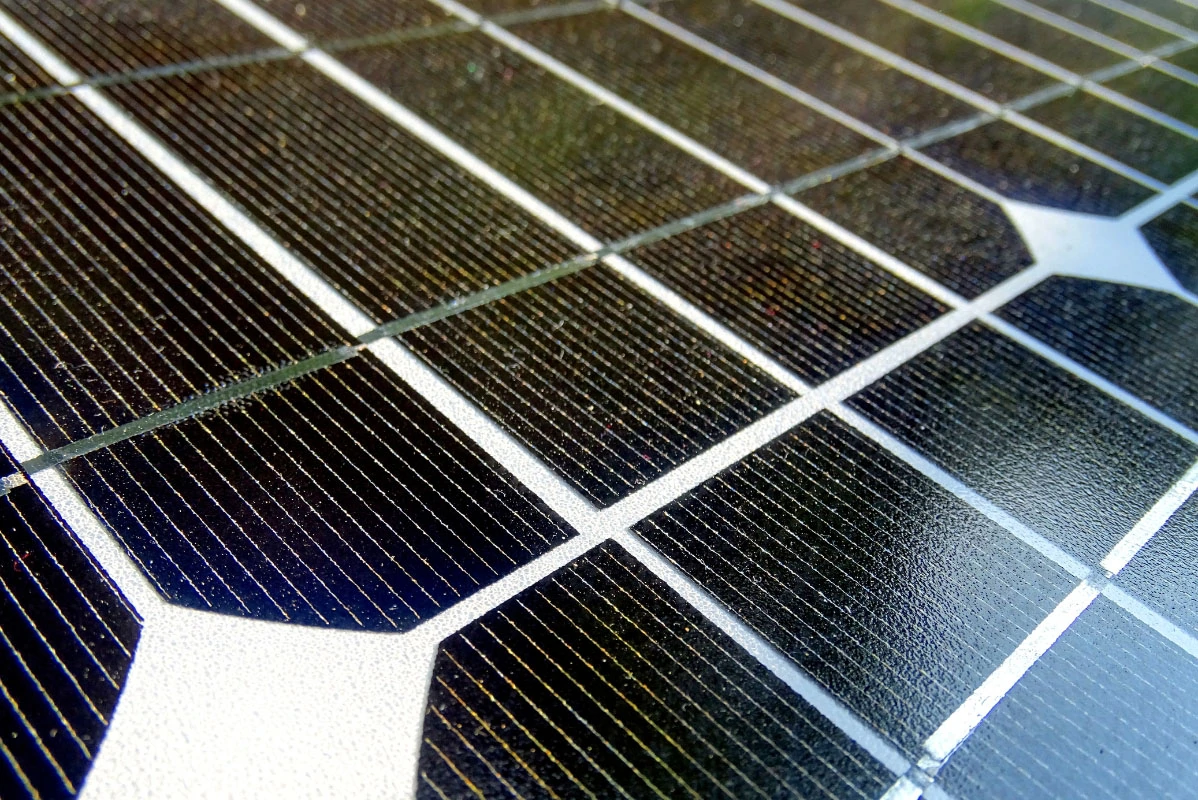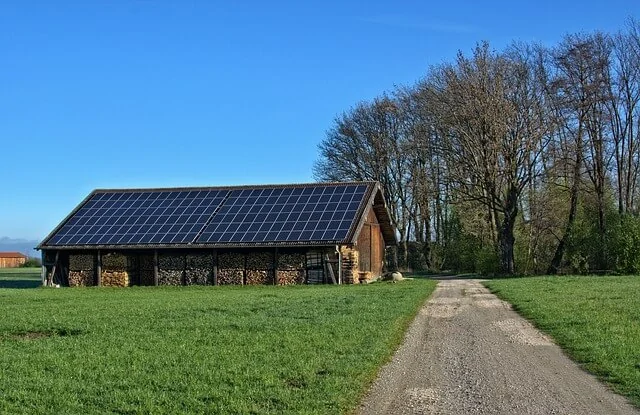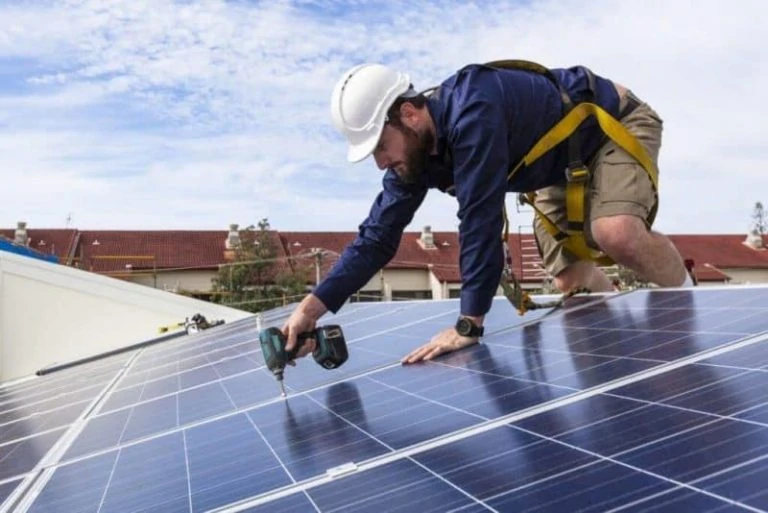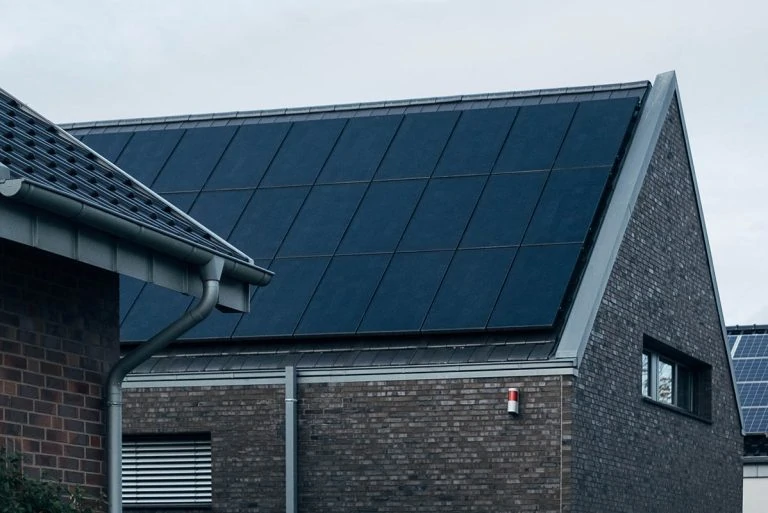It is one of the most accessible forms of renewable energy and has been enthusiastically embraced at a consumer level but is the humble photovoltaic cell a miracle or a menace?
Understanding the pros and cons of photovoltaic cells and the associated technology can help you evaluate if the PV cell is a truly renewable and environmentally friendly energy solution. In this article, we explain what photovoltaic cells are, how they are used, and provide a comprehensive list of the pros and cons of this solar technology.
What is a photovoltaic cell?
Photovoltaic cells have many pros and cons, so it’s useful to understand more about them to deduce their implications. PV cells (sometimes referred to as solar cells), are semiconductors capable of converting light energy (photons) into an electrical current. This technology was first discovered in the 19th century, but it was only in the 1960s that semiconductor technology became available to transform sunlight into electricity at scale.
Photovoltaic cell composition
PV cells are primarily made from silicon, one of the earth’s most abundant materials. The cells use silicon in the form of crystalline polysilicon and newer materials like monocrystalline wafers, which have improved efficiency.
Within the crystalline structure, a grid of metal traces conducts the generated electrical current generated by the excitation of electrons within the wafer-like silicon layers.
PV cells are the building blocks of solar panels
Solar panels, (large, composite panels made up of numerous PV cells) were first used on space satellites, but by the 1980s they began to appear on domestic rooftops. PV cell technology is now a critical component in the renewable energy sector and responsible for generating up to 10% of the world’s electricity in 2021.
The efficiency of photovoltaic cells
Photovoltaic cell technology is remarkably efficient in harnessing sunlight, a free, renewable, and non-polluting energy source. Photovoltaic cells have a maximum theoretical efficiency of approximately 33%, with the average residential solar panel generating between 200 and 400 watts per hour in optimal conditions.

Diverse uses and applications of photovoltaic technology
The uses of photovoltaic cells go beyond the basic solar panel with numerous critical applications that span industries like healthcare, agriculture, and transportation. The modular nature of the PV cell has made it easy to integrate into a wide range of devices as a source of power. Here are some interesting examples:
Photovoltaic thermal hybrid solar collector
PV cells can generate heat as well as electricity. These systems, known as photovoltaic thermal hybrid solar collector (PVT) systems convert sunlight into electricity but also include a solar thermal collector to remaining energy as heat for greater energy efficiency. The recovered heat is usually used for water or air heating.
Solar pumps
Solar pumps are an agrivoltaic solution that uses PV cells to generate power to drive pumps in remote locations that cannot be reached by mains power. Solar pumps can be used to fill watering tanks for livestock, drive irrigation or maintain the potable water (drinking water) supply of a rural home.
Concentrated photovoltaics
The power-generating performance of PV cells can be further enhanced by using a system of mirrors and lenses to concentrate sunlight on the cells. The heat generated is harvested to drive steam turbines, greeting larger amounts of electricity.
Pico PV technology
Tiny, highly portable PV systems known as pico photovoltaics or pico solar have revolutionized energy accessibility in the developing world. Devices containing a pico solar panel and rechargeable battery can be used to power items like televisions, radios lighting, and fans which can improve the quality of life in rural communities.
Pros and cons of photovoltaic cells
The amount of energy generated by photovoltaic cells is increasing exponentially, with a record 22% increase to 179 TWh in 2021. As solar energy fast becomes an essential contributor to electricity grids across the globe, it’s well worth considering if PV technology really is as good as it seems. Let’s take a closer look at the pros and cons of photovoltaic cells.
Pros of photovoltaic cells
1. Clean energy production
One of the notable pros of photovoltaic cells is that the electricity they generate does not require the combustion of wood, waste, or fossil fuels. Solar panels can provide a significant amount of power without producing greenhouse gasses and other airborne pollutants. Even solar energy used to heat water for steam turbines generates electricity without pollution.
2. PV cells use a renewable energy source
If you are looking for a renewable energy source, sunlight is about as inexhaustible as you can get. With PV technology, electricity is passively generated in any exposed location as long as the sun shines. In fact, given the right climatic conditions and efficient PV cells, solar energy becomes an abundant source of electricity.
3. PV cells can harness a free resource
Photovoltaic cells utilize the free energy that can be acquired from the sun, which is another of the obvious pros of photovoltaic cells. Though property owners and stakeholders have to make an initial investment in the photovoltaic cells, the sunlight used to generate unlimited and 100% free. Solar power lacks the costs of extraction processing and burning of fossil fuels so the overall cost of electricity is much lower.
The low cost of solar energy has accelerated its development and adoption. Solar PV is by far the cheapest technology for electricity generation across the world.
4. You can generate electricity anywhere with PV cells
PV cells can be used to generate electricity anywhere that has exposure to an adequate amount of sunlight. PV cells and solar panels have the added benefit of being highly portable. This is advantageous in remote and underdeveloped locations where they can be quickly deployed to provide onsite power.
5. PV cells are available in various form factors
Photovoltaic cells are individual units that can be combined into electricity-generating structures of any size. Form factors span picocell devices to expansive solar arrays used on solar energy farms. This versatility has increased the accessibility and utility of solar energy.
6. The electricity generated by PV cells supports smart energy grids
The consistent contribution of solar energy is now embedded in smart energy networks that use distributed power generation (DPG) rather than the more resource-intensive and polluting central power plants.
As part of a DPG system, solar panels generate electricity that can either be immediately consumed on the grid or stored in batteries that store the energy and discharge it during periods of peak demand. This reduces the proportion of electricity that is generated using non-renewable energy sources, reducing pollution and saving the consumer money.
7. The costs of PV cells are rapidly reducing
The rapid pace of innovation in solar panel manufacturing and generous government subsidies have led to a significant drop in the price of a solar energy system. As prices fall, increasing numbers of homeowners are taking the opportunity to use solar panels to generate electricity for themselves, reducing their utility bills and even earning money for the energy they add to the grid.
8. Photovoltaic cells require minimal maintenance
After they are set up, photovoltaic cells will simply get on with converting photons into an electrical current without any human intervention. They do not require any operational procedures or maintenance other than being kept clean from debris and dirt that may obscure the panel.
9. Generating electricity from solar energy is silent
The generation of electricity by PV cells is completely silent. This makes solar panels an energy-generating solution that works in residential areas as it won’t create a disturbance.
10. PV cells are low profile
Another benefit of photovoltaic cells is that they are visually unobtrusive and fit in in a wide range of environments and landscapes. The flat profile of solar panels means that property owners can mount them on rooftops so they do not take up usable space. The cells can also be integrated into other products that can then be solar-powered or readily recharged by the sun.
11. Easy installation
Their simplicity and scalability is another of the most obvious pros of photovoltaic cells, as it makes them easy to install in a range of settings. Contractors can readily install solar panels on roofs and in fields, oriented to the path of the sun.
12. Improvement of energy security
In times of increased geopolitical instability and competition for natural resources, PV cells have the potential to provide equitable access to electricity across the world. The technology and infrastructure required is simple and cheap, meaning that Lesser Economically Developed Countries could harness sunlight as an energy resource and reduce their exposure to imports.

Cons of photovoltaic cells
Looking at the numerous benefits that PV cells provide it’s easy to see why the adoption and dependence of solar energy technology are accelerating. However, it is also important to carefully consider the disadvantages of photovoltaic cells for a balanced evaluation of this technology. Here are some of the notable downsides of PV cells:
1. PV cells can only generate electricity when there is sunlight
Solar electricity generation can only take place when and where there is an adequate amount of sunlight. This means that when there is cloud, rain, or at nighttime, the solar panels are unable to provide electricity. This intermittent supply can be balanced out by the use of battery storage of generated power, but without a backup, PV cells cannot continually provide power.
2. Solar panels are not a reliable power source
Like wind energy, the inconsistent nature of solar energy means that it cannot be relied on as a primary power source without significant battery backup. Energy generated from non-renewable sources generates power much more consistently. This means that solar energy is used as a supplementary source of power that can contribute to the grid when there is adequate sunlight.
3. Solar electricity generation requires investment
Cost is one of the most obvious cons of photovoltaic cells. Sunlight is free, but photovoltaic cells and their associated hardware inverters and batteries aren’t. This means solar energy systems require additional investments to become established. Currently, domestic solar panels can cost as much as $17,000 for the average US home.
4. A solar inverter is essential for the electricity generated from PV cells to be safely used
The electrical current generated by PV cells in a solar panel is direct current (DC). DC current cannot be safely used by most properties and cannot connect to the national grid. This means that most solar energy systems require an inverter to change the DC current that has been generated into the 120 or 240-volt alternating current used by your home and the grid.
Solar inverters don’t just convert the current from DC to AC, these components also help property owners to optimize the output from their solar panels, safeguard the safe operation of the solar energy system, and add power to the grid more efficiently.
5. Solar panels require a large surface area
Though solar panels are low profile, they do require a large surface area to be exposed to the sun. If the solar panels cannot be roof-mounted, a large amount of space is required where the solar panels can be erected to face the sun. Solar farms take up large areas of land that could have been made agriculturally productive.
6. PV cells can be easily damaged
The delicate silicon wafer structure of solar panels is glass-like and can be easily broken if struck by falling objects or displaced by high winds. The crystalline structure is also inflexible and can easily suffer microfractures if it is flexed or roughly handled. Repair and replacement costs for broken solar panels are high, even though their maintenance requirements are low.
7. Production of photovoltaic cells generates several toxic substances
As a thin film technology, the production of photovoltaic cells involves the use of a range of toxic chemicals that can harm human health and the environment. The production of solar panels involves dangerous substances including cadmium telluride (CdTe), amorphous silicon (a-Si), and copper indium gallium diselenide (CIS/CIGS).
These substances pose a significant health risk if they are released as vapors or spilled during the manufacturing process. Their use requires robust environmental, health and safety regulations.
8. Air pollution can reduce the performance of PV cells
The efficiency of solar panels may be significantly reduced in urban or industrial areas due to the high levels of air pollution that affect them. Particulate air pollution obstructs the passage of light through the lower atmosphere. This phenomenon is called urban haze.
Scientists have undertaken studies in polluted cities and have found a marked reduction in insolation, the amount of sunlight reaching the solar panel. This indicates that solar panels may not be able to generate as much electricity in cities as planned.
Annual economic damage due to urban haze reduces the value proposition of solar panels significantly. Studies in Dehli suggest that revenue losses from urban haze affecting solar panels could exceed 20 million dollars annually.
9. Photovoltaic cells contribute to greenhouse gasses too
The production of PV cells also releases greenhouse gases and other forms of air pollution. Like the semiconductor sector, PV cell manufacture is energy intensive and polluting. The key contributors to emissions from PV cell productions include:
- Mining of raw materials such as quartz and metal ore.
- Purification of silicon.
- Crystallization and wafering of silicon.
- Assembly of PV cells and solar panels.
Some scientists have even suggested that emissions generated during the lifecycle of photovoltaic cells may exceed the emissions generated by burning gas or coal to generate electricity.
10. Water pollution
Again, the manufacturing process for solar panels demands large volumes of water for the purification and fabrication processes involved. There is a risk of wastewater generated from solar panel production becoming tainted with some of the toxic and caustic substances generated. Chemical spills can also lead to the leeching of chemicals into groundwater supplies.
11. DIY installation is difficult
Using solar panels to become self-sufficient in energy is a goal for many people. However, trying to save money by installing solar panels yourself is highly risky. Installation of PV cells is a specialist task that requires heavy lifting and complex wiring by competent and qualified professionals to ensure that the electricity generated can be safely used by your property.
Conclusion on comparing the pros and cons of photovoltaic cells
Photovoltaic technology is one of renewable energy’s great achievements. PV cells are driving the production of renewable, sustainable, and clean electricity from sunlight.
As with many industries, the manufacture of photovoltaic cells does involve the consumption of non-renewable resources and the generation of by-products that are harmful to the environment and human health.
However, the transformative potential of solar energy is too great to ignore as it is one of the most accessible methods of electricity generation globally. Thankfully, increased innovation and efforts by the PV industry to minimize the adverse effects of PV cells should make solar energy cleaner, cheaper, and more reliable.













